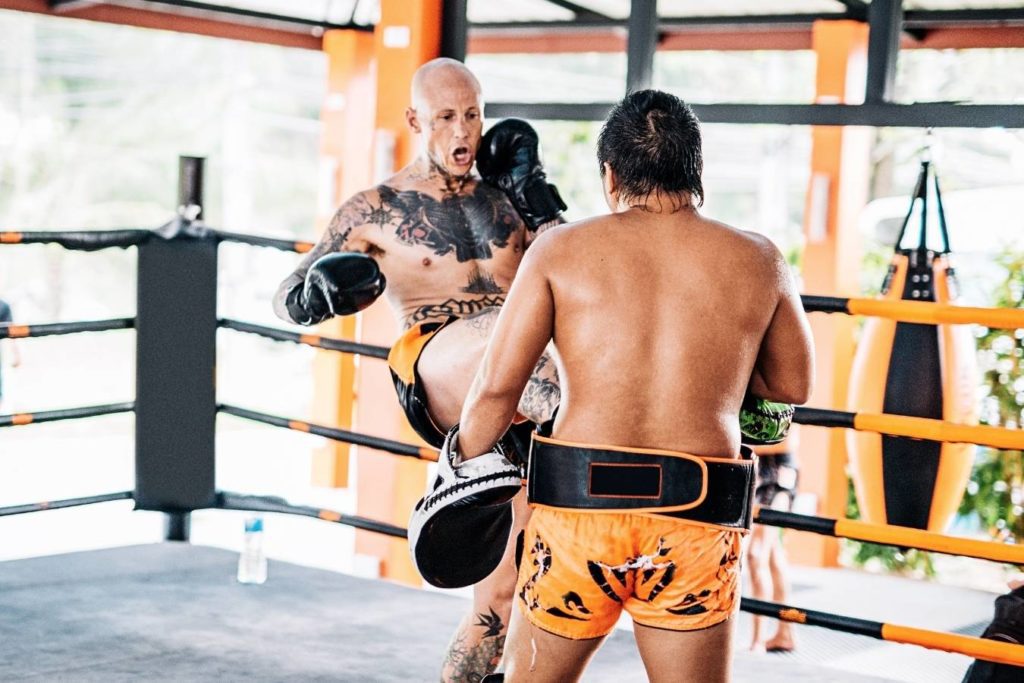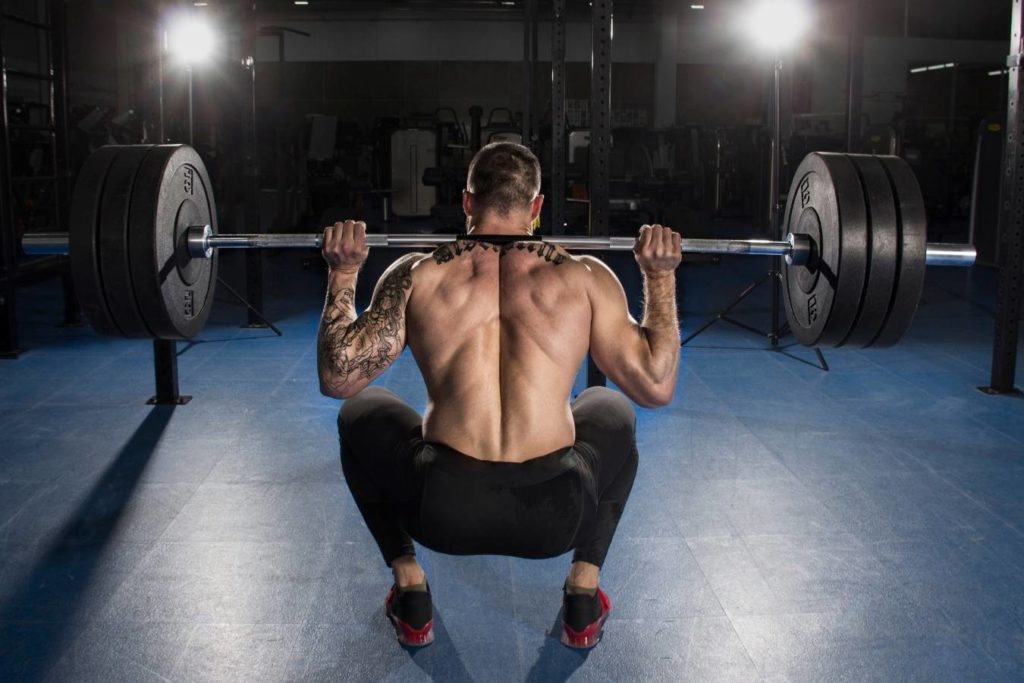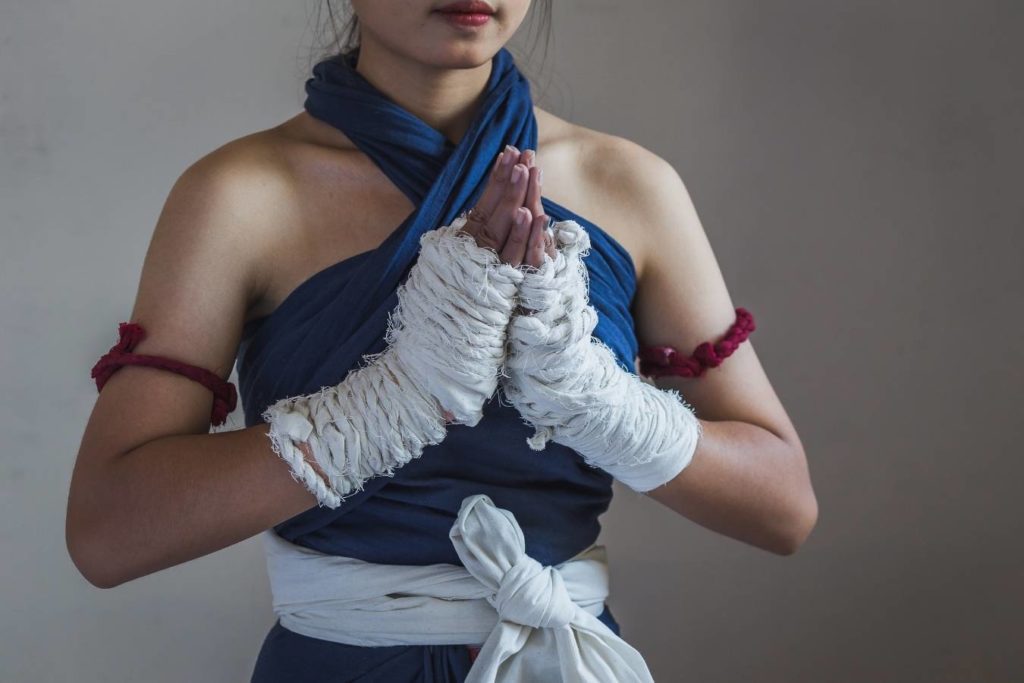It’s a dilemma that plagues Thai boxers worldwide: how do you condition your shins for the demands of the sport? Anyone who’s ever kicked a bag or Thai pads for the first time can relate to the pain and subsequent bruising along the shin bone.
Then, when you watch a fight, you witness fighters blast away with full power against knees and elbows, and you cringe even at the sight of it.
While the reality is that the level of conditioning pro Thai fighters who have been fighting from the age of 10 is likely unattainable for most of us, there is a lot you can do to condition your shins to become both sharp weapons to cut down opponents and granite shields to check kicks with.
Here are our top 8 tips from professional fighters to help you condition your shins:
How Shin Conditioning Works
It’s an undeniable fact that fighters, be they Muay Thai practitioners, karatekas, or MMA fighters, have a significantly higher tolerance to pain in their shins than regular people.
Discover The Little Known Secrets For Unlocking Devastating KO Power!
Heavy hands are built doing these things...
A prevalent concept in the fight world is that this is achieved by getting micro fractures on the bones, which are then repaired by the body and made stronger in a similar fashion as muscles work.
But science shows us this is most likely inaccurate, and too much constant damage may have the opposite effect because the remodeled bone is weaker, not denser. So how come fighters can kick as hard without problems?
The main reason is that the nerves deaden or get used to the constant banging and do not hurt as much. Basically, you become much more tolerant of pain.
Furthermore, bones get stronger and denser from training but not so much from the microfractures.
Things like resistance training and doing all the combat-specific movements have a more profound effect on bone density.
Even a lifetime of conditioning the shins won’t completely remove the pain from having your kick checked or landing on a forearm.
Still, the pain becomes much more tolerable in time, and the suffering usually comes after the fight.
Training in Muay Thai will make your shins stronger and less sensitive without conscious effort, but here are 8 pro tips on quickening the process.
Pad Work

Padwork is one of a student’s first experiences in a Muay Thai class. Your partner or coach will hold heavy leather kick pads for you as you learn the fundamental strikes of this ancient martial art.
One of the most powerful strikes in the arsenal is the roundhouse kick. This technique requires the hip to turn over, causing the sharp part of the shin to land on the pads (and in time on the opponent).
This may hurt initially while you learn to deal with the pain. Your shins may even show signs of swelling if they are sensitive or kicking with a lot of power.
As you continue to do your pad work, you can improve the technique and increase your kicks’ power, which will contribute to shin conditioning. Over time, you will experience less bruising and pain in your legs from training.
Suggested Training
Beginners: Attend pads classes at least 2 x a week
Intermediate: Attend pad classes at least 3 x a week
Advanced: Attend pads classes 4-6 x a week
Bag Work
The heavy bag is another staple of Thai training and your number-one shin conditioning tool. Muay Thai training includes a lot of heavy bag rounds, and this will be the place where your shins will get hardened the most.
If you are starting, proceed with caution and build up your tolerance by practicing kicks on the bag and pushing yourself close to your threshold.
You can gradually increase the intensity by increasing the power or number of kicks or graduating to a harder bag.
Most gyms have different-density bags, and you can start on a softer bag before smashing the “concrete” ones.
The lower you go on the heavy bag, the more stuffing gathers and the harder the bag is, so measure your power depending on where you are kicking early on.
Turning your hip over on these kicks is crucial so that the shin makes contact with the bag. This is a key characteristic of Thai-style kicks and part of what makes them so powerful.
It’s a common mistake to kick more up than in, thus missing a large part of the shin and giving you a false sense of security.
Suggested Training
Beginners: Finish class with 10-15 strong kicks per leg. Do another set if you feel able.
Intermediate: Finish class with 15-30 strong kicks per leg. Do 1-2 more sets if you are able.
Advanced: Finish class with 30-50 strong kicks per leg. Try to reach 100 total as a minimum target.
Sparring
Sparring is another practice that conditions the shins. In Thailand, fighters ‘play spar’ without shin guards, striking and blocking at roughly 20-30% of their total power capacity, which we Westerners should do more of.
This sparring develops the flow of striking and strengthens the shins by exposing them to controlled impact and much lower intensity than in an actual fight.
Even if you don’t spar only with shin guards, the shins will still get some beating. Especially when you go relatively hard and your kicks get checked or land on hard bones you will feel it even through the thick leather.
Sparring will make your shins less painful, but if you have the option and proper training partners to flow spar without shin guards, I advise you to go for it.
Suggested Training
Beginner: Practice play sparring with a partner wearing foam shin pads at 30% capacity.
Intermediate: Practice play sparring with a partner wearing foam shin pads at 40% capacity or without shin pads at 30% capacity
Advanced: Practice play sparring without shin pads at 40% capacity
Using Hard Objects
The most controversial part of shin conditioning is using different hard objects to hit or roll over your shins. Some claim this is the way to get steel shins. Others use science to tell you it’s bullshit. So, what’s the truth?
The truth is likely in the middle. Too much damage too often does not leave enough time to repair, and the process weakens them. While there is a “just right” amount, it’s nearly impossible to discover it.
For the most part, hitting your shins with something is pointless IF you do enough bag and pad work, sparring, and strength training.
Still, doing moderate amounts of shin conditioning with a hard object can help you become more pain-tolerant and give you a mental edge, especially if you are in a period when you are not getting enough fight training.
If you have multiple Muay Thai and strength training sessions per week, doing extra shin conditioning is unnecessary and may even be harmful if you go overboard.
Nutrition
It’s essential to fuel your body appropriately during your training regimen. This includes good nutrition and supplementation. Eating plenty of fresh fruit and vegetables, getting a ton of protein, and drinking enough water will all contribute to your physical well-being.
Sometimes, we need help getting all the nutrients we need from our diet. This can especially happen when our body is under exceptional physical demand.
In this case, there are a few recommended supplements to take while you are asking a lot of your body, and they prevent you from becoming depleted. Here is what you can use:
- Calcium helps to build and maintain healthy bones.
- Vitamin D is necessary for the absorption of calcium and the development of bones and teeth.
- Other vitamins and minerals that will be of benefit include zinc, magnesium, and vitamin K.
- A complete supplement breakdown has been provided in the article “Best Supplements For Boxers.”
Resistance Training

Weight lifting is the most significant but often overlooked element of shin conditioning. Weight training stresses your bones and consequently strengthens them by increasing bone density. Essential lifts for the lower body include the squat, deadlift, and lunges.
Resistance training isn’t limited to solely lifting weights. Strength training for Muay Thai should include various extensive (sub-maximal) and intensive (maximal) plyometrics and other explosive exercises where the impact with the ground will also increase bone density.
Running is another form of shin conditioning that Thais favor, and it may be an overlooked part of their infamous shin strength.
Thai fighters usually run every day, six days a week, and running not only helps the bones get denser but also strengthens the whole lower leg, which is vital for delivering hard kicks and not feeling as much pain.
Suggested Training
Beginners: 1-2 weights sessions a week and 1 x up to 3-mile run.
Intermediate: 2-3 weights sessions per week and 2 x up to 4-mile run.
Advanced: 2-3 weights sessions per week and 2 -3 x up to 5-mile run.
Rest and Recovery
Recovery is an essential part of training. This includes adequate sleep and rest between sessions, but for the shins specifically, a couple of methods can help your body recover quicker from tough conditioning rounds.
Ice your shins as soon as possible if you have any soreness or bruising. This reduces inflammation and helps the muscles in the leg to recuperate faster.
Reducing swelling makes it quicker and easier to get back to regular functioning. Ice baths are one way you can do this.
Massage is another healing technique to support the recovery process. Similar to icing, it reduces inflammation and speeds up the recovery process.
Massage can be used a couple of days after pain or stiffness appears to flood the joints and tissues with oxygen and nutrients and maintain good circulation.
Recommended Recovery
All Levels: Ice shins as quickly as possible if pain, bruising, or swelling occurs.
Use massage techniques weekly or as often as possible to keep shins in the best condition while strengthening them.
Patience

Finally, patience and honesty will go a long way in this process. It’s impossible to condition your shins overnight, and results will directly correlate with the frequency and intensity of your training.
As with anything in Muay Thai, discipline and commitment will take you far.
To a certain extent, you will never be completely pain-free after a shin-on-shin fight. There are fighters with over 300 fights who can still be seen limping away from the ring.
But by following these seven steps, you will find that your shins become stronger over time, recover much quicker than when you started, and be confident to throw kicks without hesitation.

